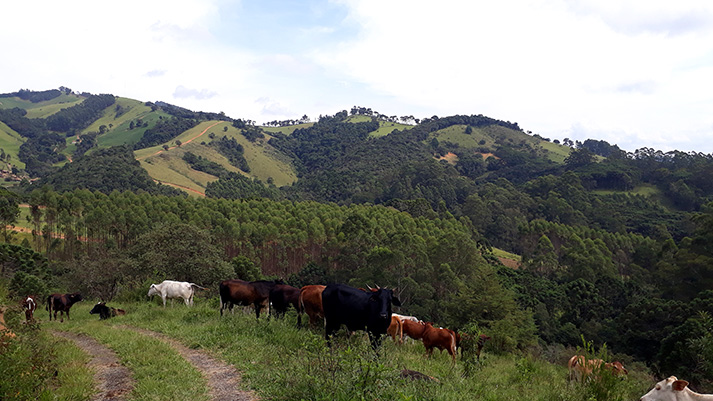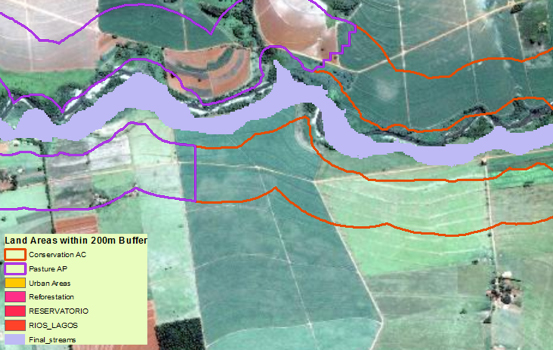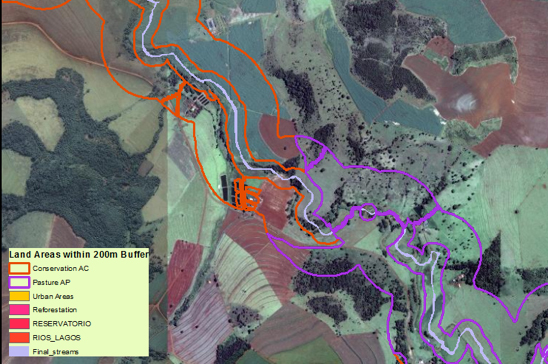Working Forests for Energy Generation and the Restoration of Riparian Ecosystems in São Paulo, Brazil
Norton Siano Ribeiro de Freitas and Bruce A. McCarl
Texas A&M University
Dept. of Agricultural Economics
For the last sixty years land degradation/abandonment, resulting from use for extensive sugarcane, coffee, annual crops, and citrus, as well as livestock grazing, have caused large abandoned but previously vegetated areas in São Paulo, Brazil. Some of this area naturally regenerated into forest patches, and other parts have been actively afforested and yet other parts could be afforested. The ecological health of riparian zones can be enhanced by creating working forests located adjacent to riparian zones. These “working” forests are not preservation units but can provide revenue with much greater environmental benefits. Such an approach required a framework to assess the potential benefits for creating working forests near stream areas as riparian buffers. The framework was demonstrated using FASOMGHG, a multiperiod, intertemporal, price-endogenous, mathematical programming model depicting land transfers and other resource allocations between and within the agricultural and forest sectors.

To achieve this goal we have conceptualized a model to restore these riparian zones to control runoff from agricultural operations by integrating working forests that address both commodity production and biodiversity conservation on 200m Buffer Sites and done a first specification with a data set which includes (a) the effects of Degraded Land Restoration/Afforestation (DLRA) on farm income, land transfers, shadow prices for land, commodity production, non-land factor use, and consumer food prices, (b) the implications of DLRA for ecosystem services (carbon storage, flood and erosion control, waste absorption capacity), (c) the identification of beneficiaries plus their welfare effects to understand how their provision should be financed, (d) the impact of working forests versus conventional land uses on landowners incomes, (e) the conditions facilitating the spread of working forests, as well as the obstacles, and the extent to which private or public sector investments are required. The model solution portrays simultaneous market equilibrium over an extended time on a five year time step basis. The results yield a dynamic simulation of prices, production, management, consumption, GHG effects, biofuel prospects and wood production from native species utilized in restoration under the scenario depicted in the model data.

